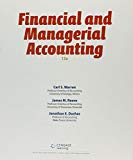
1.
Financial Ratios: Financial ratios are the metrics used to evaluate the liquidity, capabilities, profitability, and overall performance of a company.
The following ratios for five years:
- (a) Rate earned on total assets
- (b) Return on
stockholders’ equity - (c) Times interest earned ratio
- (d) Ratio of total liabilities to stockholders’ equity
1.
Explanation of Solution
Given info: Items of financial statement
a. Rate earned on total assets for five years (2012 to 2016)
Return on assets determines the particular company’s overall earning power. It is determined by dividing sum of net income and interest expense and average total assets.
Formula:
b. Rate earned on stockholders’ equity for five years.
Rate earned on stockholders’ equity is used to determine the relationship between the net income and the average common equity that are invested in the company.
Formula:
c.Number of times interest charges are earned ratio for five years
Number of times interest charges are earned ratio quantifies the number of times the earnings before interest and taxes can pay the interest expense. First, determine the sum of income before income tax and interest expense. Then, divide the sum by interest expense.
Formula:
d. Ratio of liabilities to stockholders’ equity for five years (2012 to 2016)
Ratio of liabilities to stockholders’ equity is determined by dividing liabilities and stockholders’ equity. Liabilities are determined as the difference between ending balance of assets and stockholders’ equity.
Formula:
2.
To prepare: Analysis of graphs
2.
Explanation of Solution
- The return on total assets and return on stockholders’ equity are in increasing trend for the last five years. There is a positive use of leverage. It is evident through the above ratios.
- The ratio of liabilities to stockholders’ equity shows that the proportion of debt to stockholders’ equity is declining over the period.
- The level of debt has been relative to the equity and has improved in the five years.
- The times interest earned ratio is improving when compared to industry average.
Want to see more full solutions like this?
Chapter 15 Solutions
Bundle: Financial & Managerial Accounting, Loose-leaf Version, 13th + CengageNOWv2, 1 term (6 months) Printed Access Card Corporate Financial ... Access Card for Managerial Accounting, 13th
- On the basis of the following data, what is the estimated cost of the inventory on May 31 using the retail method? Date Line Item Description Cost Retail May 1 Inventory $23,800 $39,670 May 1-31 Purchases 42,600 67,540 May 1-31 Sales 91,090 a. $24,690 b. $19,580 c. $29,564 d. $9,984arrow_forward00000000 The following lots of Commodity Z were available for sale during the year. Line Item Description Units and Cost Beginning inventory 12 units at $48 First purchase 15 units at $53 Second purchase 55 units at $56 Third purchase 13 units at $61 The firm uses the periodic inventory system, and there are 25 units of the commodity on hand at the end of the year. What is the ending inventory balance of Commodity Z using LIFO? a. $1,465 b. $1,265 c. $5,244 d. $1,200arrow_forwardBeginning inventory 8 units at $51 First purchase 17 units at $55 Second purchase 26 units at $58 Third purchase 15 units at $63 The firm uses the periodic inventory system, and there are 23 units of the commodity on hand at the end of the year. What is the ending inventory balance of Commodity Z using FIFO? a. $1,173 b. $1,409 c. $3,773 d. $3,796arrow_forward
- 00000arrow_forwardThe inventory data for an item for November are: Nov. 1 Inventory 4 Sold 19 units at $23 8 units 10 Purchased 32 units at $21 25 units 17 Sold 30 Purchased 21 units at $23 Using a perpetual system, what is the cost of goods sold for November if the company uses LIFO? a. $731 b. $861 c. $962 Od. $709arrow_forwardI got the 3rd incorrect. can you help me go step by step. Date Line Item Description Units and Cost Amount Mar. 1 Inventory 21 units @ $31 $651 June 16 Purchase 29 units @ $33 957 Nov. 28 Purchase 39 units @ $39 1,521 Total 89 units $3,129 There are 13 units of the product in the physical inventory at November 30. The periodic inventory system is used. Determine the inventory cost using the weighted average cost methods. $arrow_forward
- 3arrow_forwardBoxwood Company sells blankets for $31 each. The following information was taken from the inventory records during May. The company had no beginning inventory on May 1. Boxwood uses a perpetual inventory system. Date Blankets Units Cost May 3 Purchase 8 $15 10 Sale 5 17 Purchase 10 $18 20 Sale 7 23 Sale 2 30 Purchase 12 $19 Determine the cost of goods sold for the sale of May 20 using the FIFO inventory costing method. a. $201 b. $114 c. $117 O d. $171arrow_forwardIn the month of March, Horizon Textiles Ltd. had 7,500 units in beginning work in process that were 65% complete. During March, 29,500 units were transferred into production from another department. At the end of March, there were 3,800 units in ending work in process that were 40% complete. Compute the equivalent units of production for materials and conversion costs using the weighted-average method.arrow_forward
